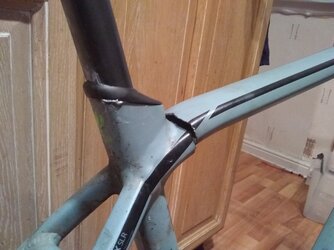One reason for aluminium resurgence is weight. A few years back sweet spot mid-range CF frames were much lighter than they are today. A £1500-1800 complete build, kitted out with Ultegra, entry level wheels and saddle would weigh in at 8kg. You bought that, upgraded to a £1000 wheelset and a good quality saddle, voila: £3000 bike under 7.5kg. Flagship frames were much lighter then the 6.8kg UCI limit which led pro teams having to add ballast. So if you wanted to buy a bike for use in a UCI-sanctioned event there was no great reason to get the flagship - at least as far as weight is concerned.
We could debate why what happened happened, but the reality is that today flagships are at or very near the UCI limit. Naturally, a mid-range bike can't weigh the same - that would look bad. So a £3000 build now comes in at 9kg.
What gives a bicycle frame stiffness is the overall frame geometry, the material's Young's modulus and the cross section of the tubes (shape, diameter, wall thickness, etc). So if we assume that the overall geometry of two bikes is the same, the size and shape of the tubes as well, and they weigh the same but one of them is alloy and the other CF, then the CF one will be much stiffer. You can make the alloy one just as stiff as the CF but that would require thickening the walls and lead to a significant increase in weight. This is a great oversimplification but no point of getting in the details.
Alloy frames are, traditionally, regarded as less stiff/more compliant - this is because manufacturers tried very hard to make them not significantly heavier than carbon. Now, given what I said at the beginning about mid-range builds, this is less of an issue. I feel the industry is at a point where, if you're a mid-range consumer, the frame material stopped being meaningful.

 It was this one:
It was this one: 

